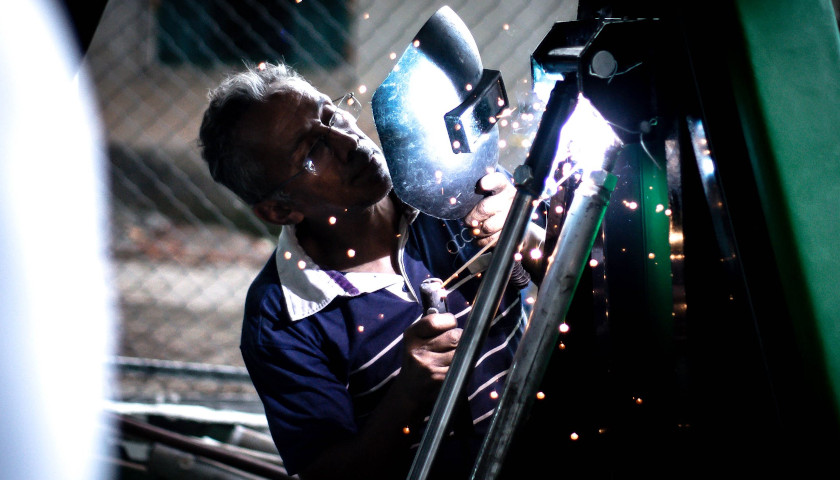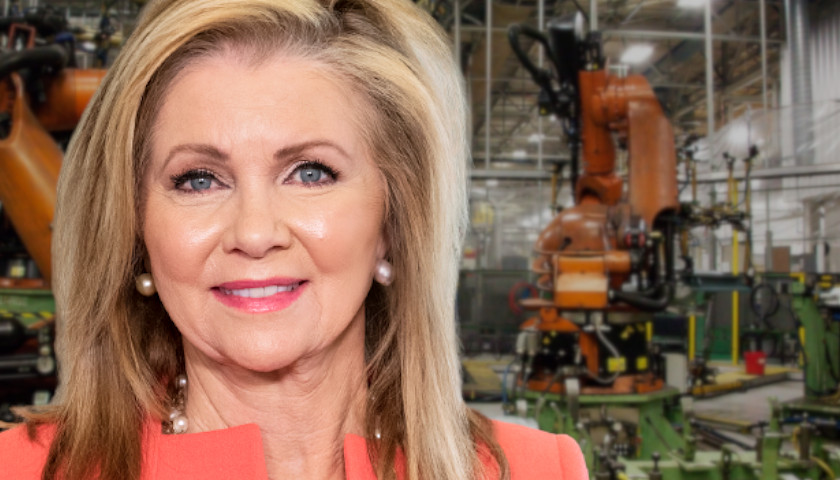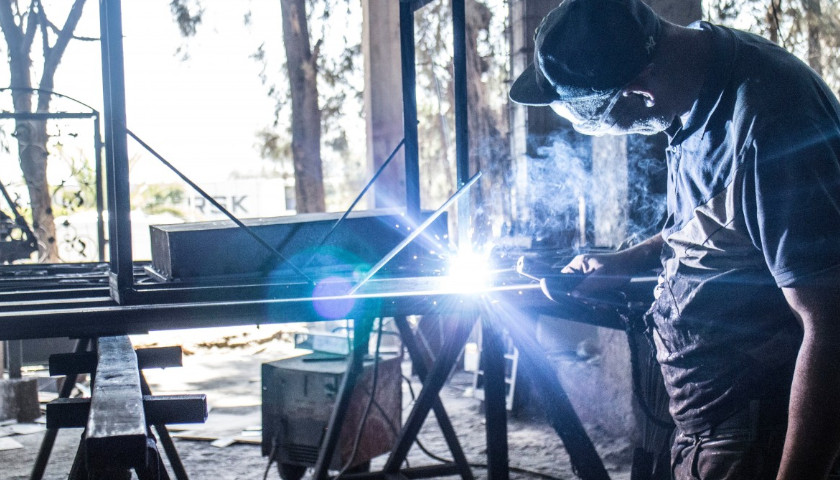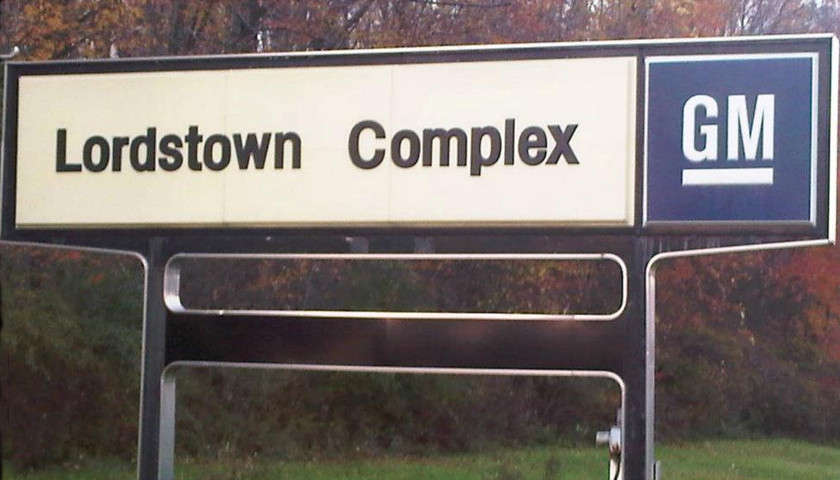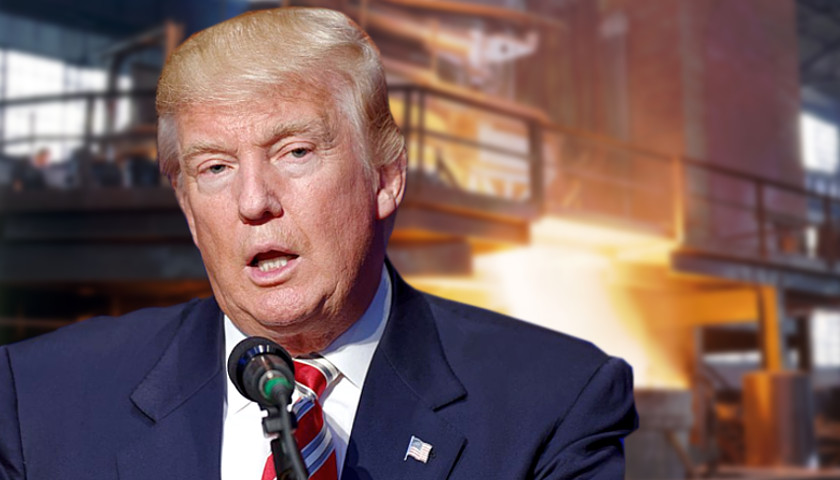Tri-City Extrusion, Inc. (TCE) officials recently announced that the company will invest $30.8 million to expand its manufacturing operations in Northeast Tennessee.
Read the full storyTag: manufacturing
Columbiad Fabrication and Aviation, LLC Announces Expansion into Henry County
Columbiad Fabrication and Aviation, LLC officials announced this week that the company will invest $4.8 million to expand its manufacturing operations in Henry County, creating 144 new jobs over the next five years.
Read the full storyLeaving a Legacy: Congressman Mark Green Explains Nearshoring Act
Friday morning on The Tennessee Star Report, host Leahy welcomed U.S. Rep. Mark Green (R-TN-07) to the newsmaker line to explain the details and mechanics of his Near Shoring Act that would create a win-win situation by decoupling manufacturing from China and bringing it to Latin America.
Read the full storyWaupaca Foundry Idling Operations at Etowah Facility
Waupaca Foundry announced it will “idle melt, molding and core room production and continue iron casting processing operations at its Etowah, Tennessee facility” Tuesday in a press release.
Read the full storyMinnesota Unemployment Rate in March Reached Lowest Level Ever Recorded
Minnesota’s unemployment rate decreased to 2.5% in March, tying its lowest level ever recorded, the Department of Employment and Economic Development announced Thursday.
The last time it was that low was in February 1999.
Read the full storyUltimate Linings, LLC Establishing Manufacturing Operations in Wilson County
Ultimate Linings, LLC officials announced Tuesday the company will relocate its chemical manufacturing facility from Bedford, Texas, to Lebanon, Tennessee, according to a press release by the Tennessee Department of Economic and Community Development (TNECD).
Read the full storyPermobil, Inc. Expands Manufacturing Operations in Wilson County
Permobil, Inc. officials announced the company expects to invest $15.5 million to expand its manufacturing operations at the company’s North American headquarters in Middle Tennessee, according to a press release by the Tennessee Department of Economic and Community Development (TNECD).
Read the full storyATC Drivetrain Announces New Manufacturing Operations in Knoxville
On Wednesday, Governor Bill Lee, Department of Economic and Community Development (TNECD) Commissioner Bob Rolfe, and ATC Drivetrain officials announced the company has selected Knoxville as the location for its newest manufacturing facility.
Read the full storyUltra Safe Nuclear Corporation Announces New Manufacturing Facility in Oak Ridge
On Wednesday, Tennessee Governor Bill Lee, Department of Economic and Community Development (TNECD) Commissioner Bob Rolfe, and Ultra Safe Nuclear Corporation (USNC) officials announced the company will establish new manufacturing operations in Oak Ridge.
Read the full storyGovernor Lee, Commissioner Rolfe Announce New Fiberon Manufacturing and Distribution Operations in Columbia
On Wednesday in a press release, Tennessee Governor Bill Lee, Department of Economic and Community Development Commissioner Bob Rolfe and Fiberon officials announced the company, Fiberon, will establish new manufacturing and distribution operations in Columbia, Tennessee.
Read the full storyGeneral Motors Announces $7 Billion Investment for Electric Vehicle Manufacturing in Michigan
Automobile maker General Motors on Tuesday announced a new, $7 billion investment in Michigan to expand manufacturing capacity for electric vehicles and batteries.
According to projections released by the company, the investment will create 4,000 new jobs, while retaining an additional 1,000.
Read the full storyTitan Steel Door to Expand Operations, Invest $11 Million in Northeast Georgia
Titan Steel Door will invest $11 million in northeast Georgia to create a new manufacturing facility, according to a release from Governor Brian Kemp.
The new project will establish a 145,000 square feet building and create more than 90 Jobs in Hart County, based on projections released by Kemp’s office.
Read the full storyIntel Officially Announces Chip Factory in Ohio
Computer giant Intel Friday officially announced its intention to build a multi-billion dollar semiconductor factory in Ohio.
“Intel today announced plans for an initial investment of more than $20 billion in the construction of two new leading-edge chip factories in Ohio,” a corporate press release said. “The investment will help boost production to meet the surging demand for advanced semiconductors, powering a new generation of innovative products from Intel and serving the needs of foundry customers as part of the company’s IDM 2.0 strategy. To support the development of the new site, Intel pledged an additional $100 million toward partnerships with educational institutions to build a pipeline of talent and bolster research programs in the region.”
Read the full storySenator Blackburn Introduces Bill to Support Manufacturers
Senator Marsha Blackburn (R-TN) on Wednesday joined Senator Gary Peters (D-MI) and introduced new legislation to help manufacturing across the United States.
The bill, the Strengthening Support for American Manufacturing Act, would propose enhancements to improve the U.S. Department of Commerce’s manufacturing programs in order to better serve manufacturers.
Read the full storyMichigan Spending $2.5 Million of Taxpayer Money on Private Businesses, Government Groups
Gov. Gretchen Whitmer and the Michigan Department of Labor and Economic Opportunity (LEO) awarded $2.5 million in Michigan Industry Cluster Approach 3.0 (MICA 3.0) grants to business groups statewide to address labor shortages.
“These grants are putting Michiganders first by helping innovative employers in high-demand industries address talent shortages across Michigan,” Whitmer said in a statement. “Together, we can continue leading the future of agriculture, construction, IT, manufacturing, mobility, and so much more as we usher in a new era of prosperity for our families, communities, and small businesses.”
Read the full storyThe Global Chip Shortage Will Have a Major Impact on Consumers
The global chip shortage is beginning to impact consumers, driving up prices of smartphones, vehicles and personal electronics as manufacturers struggle to keep up with rising demand.
“We’re seeing 5% to 10% price increases right now,” Glen O’Donnell, vice president and research director at Forrester, told the Daily Caller News Foundation. “They will increase more as this issue drags on.”
Semiconductors, the internal components essential to the functioning of almost every electronic device, have been in short supply since early 2020 due to high consumer demand of mobile electronics cloud services, and other products that require computer chips, according to O’Donnell. The COVID-19 pandemic exacerbated the problem by stalling semiconductor production and disrupting supply chains, with demand for consumer electronics only skyrocketing due to more people working from home.
Read the full storyDonald Trump Joins the John Fredericks Show to Discuss Intel Agencies, American Manufacturing, Taiwan, and RINO Republicans
Wednesday morning on the John Fredericks Radio Show, host Fredericks welcomed the 45th President of the United States, Donald J. Trump to the line to discuss Intel agencies, Taiwan, and election integrity.
Read the full storyNew Georgia Report Shows Investments, Job Creation Increasing Around the State
Georgia officials have announced that economic development projects throughout the state during fiscal year 2021 have delivered record-setting jobs and investments. This, according to a press release that Georgia Gov. Brian Kemp and officials with the Georgia Department of Economic Development (GDEcD) published this week.
Read the full storyKORE Power to Grow in Maricopa County, Bringing Thousands of Jobs
KORE Power, Inc. announced on July 29 that they are building the first lithium-ion battery manufacturing facility owned entirely by a U.S. company in Maricopa County, bringing 3,000 jobs to the Grand Canyon state.
The one million square foot KOREPlex manufacturing facility 40 miles west of Phoenix in Buckeye will support up to 12 gigawatt-hours (GWh) of battery cell production. Once operational, the facility will produce enough power capacity for 3.2 million homes each year, the company said.
Read the full storyPartnership Boosts Supply Chain Resiliency for Florida’s $56B Manufacturing Industry
According to an April-June McKinsey Global Survey poll of 60 senior supply-chain executives from across the nation, 73% encountered a shortage of suppliers – not just supplies – and 75% faced production/distribution shortfalls during the 2020 height of the COVID-19 pandemic.
Florida’s 21,000 manufacturers – not to mention farmers, restauranteurs, hoteliers, retailers – were also affected by pandemic-induced supply disruptions, as they were by Hurricanes Irma in 2017 and Michael in 2018.
To mitigate disruption for the state’s $56 billion manufacturing industry, which employs about 400,000 Floridians, the Associated Industries of Florida (AIF), Space Florida and FloridaMakes have formed Connex Florida, an online database to link manufacturers connect with prospective suppliers and develop business opportunities.
Read the full storyPeloton Picks Ohio for Its First U.S. Factory
Peloton Interactive announced plans to build its first U.S. factory in Ohio, creating more than 2,000 jobs and investing more than $400 million in the state-of-the-art factory.
The new facility, in Troy Township between Toledo and Bowling Green, will be named Peloton Output Park and will produce Peloton Bike, Bike+ and Peloton Tread starting in 2023. It will employee 2,174 people and generate $138 million in new payroll.
The state approved a 2.301%, 15-year job creation tax credit for the company.
Read the full storyTop Economists Expect Inflation to ‘Accelerate Strongly’ in Coming Weeks
Economists expect inflation to “accelerate strongly” in the coming weeks and months, but said consumer prices would eventually moderate.
The consumer price index (CPI), a common measure for inflation, is expected to rise 2.8% in 2021 and 2.3% in 2022 compared to the 1.2% increase that occurred in 2020, according to economists surveyed by the National Association for Business Economics (NABE).
The projection, released Monday, reflected the Federal Reserve consensus that inflation will heat up by the end of the year before cooling down as the economic recovery continues.
Read the full storyOhio Democrat Admits Party ‘Can’t Understand’ Working Class Americans
A Democrat member of Congress from Ohio admitted in an interview published Tuesday that her party is out of touch with working class Americans.
“They just can’t understand,” Rep. Marcy Kaptur (D-OH-09) told The Hill. “They can’t understand a family that sticks together because that’s what they have. Their loved ones are what they have, their little town, their home, as humble as it is — that’s what they have. Respect it. It was so insensitive.”
Read the full storyOhio Earns Defense Manufacturing Designation
Ohio can receive a $5 million grant to improve manufacturing and train workers after the U.S. Department of Defense designated the state as a Defense Manufacturing Community, Gov. Mike DeWine and Lt. Gov. Jon Husted announced in a news release.
Read the full storyAnnual Survey Shows Minnesota Manufacturers Anticipate Strong Economy in 2020
An annual survey of Minnesota’s manufacturing sector shows respondents anticipate stable or improved economic conditions in 2020.
Read the full storyLeading Schools Series: Wisconsin School Runs a Manufacturing Business Within its Doors
Machine shop training in public high schools has dwindled nationally either because of a lack of funding or no funding at all. So in 2006, instructor Craig Cegielski approached the Eleva-Strum School Board in Strum, Wisconsin with an odd request. Rather than asking for money, Cegielski instead requested permission to launch an in-school manufacturing business.
Read the full storyFiat Chrysler Proposes Merger with France’s Renault
Fiat Chrysler proposed a 50-50 percent merger Monday with Renault, a union that would create the world’s third biggest automaker. The merger, if it happens, would vault the new company, with annual sales of 8.7 million vehicles, into a position ahead of General Motors and behind only Volkswagen and Toyota, both of which sell about 10.6 million. The merger could give the combined companies a better chance in the battle among auto manufacturers to build new electric and autonomous vehicles. Investors in both companies showed their initial approval of the announcement, with Renault’s shares jumping 15 percent in afternoon trading in Paris and Fiat Chrysler stock up more than 10 percent in Milan. The proposal calls for shareholders to split ownership of the new company. Fiat Chrysler said the deal would save the combined companies $5.6 billion annually with shared payments for research, purchasing and other expenses. The deal does not call for closure of any manufacturing plants but the companies did not say whether any employees would lose their jobs. The deal would give Fiat access to Renault’s electric car technologies, allowing it to meet the strict carbon dioxide emission standards the European Commission is enacting. For its…
Read the full storyLast of Lordstown Auto Parts Manufacturing Ends Two Months Early: More Layoffs to Follow
The last manufacturing orders left for the rapidly shuttering Lordstown Auto Plant finished up on April 5. The project – metal stamping replacement parts for the Chevy Cruze – was slated to last until June, ensuring work for those few employees still not laid off. With the job wrapping up early, the workers are facing an uncertain future. As previously reported: Since its opening in 1966, Lordstown, Ohio has been the backbone of the local economy. Providing plentiful high-paying jobs, working at the plant ensured, at a minimum, a direct entree to the middle-class regardless of education level. Thousands of workers were employed by the plant at its peak. Over time those numbers dropped to below 2,000. In 2019 alone, 1,633 Lordstown auto workers and 72 members of the facilities support staff have been laid off. The majority of these layoffs occurred between March and April. There are currently less than 100 workers still active at the plant but with the completion of this project, it is likely that they will be laid off in the coming weeks as well. According to UAW Local 1112 president Dave Green, the work that is being done is mostly administrative. “We are going through and cleaning…I’m currently working in material handling.…
Read the full storyNew Data Suggest Continued Expansion in the Manufacturing Sector in February
by Robert Hughes The Manufacturing Purchasing Managers’ Index from the Institute for Supply Management registered a 54.2 percent reading in February, down from 56.6 in January (see top chart). Despite the pullback, the index remains well above neutral, suggesting continued expansion for the manufacturing sector. According to the Institute for Supply Management, “A PMI above 42.9 percent, over a period of time, generally indicates an expansion of the overall economy. Therefore, the February PMI indicates growth for the 118th consecutive month in the overall economy and 30th straight month of growth in the manufacturing sector.” Among the key components of the Purchasing Managers’ Index, the New Orders Index came in at 55.5 percent, down from 58.2 in January (see bottom chart). February was the 34th consecutive month with readings above 50. Analysis by the Institute for Supply Management suggests that readings above 52.5 for a period of time are consistent with rising real new orders for manufacturers. The production index was at 54.8 percent in February, down from 60.5 in January. February marks the 30th month in a row above 50. The results suggest production grew in February but the pace was slower than January. Weather may have been…
Read the full storyAs US Economy Swells, Ohio Gets Left Behind
2018 was one of the best economic years for America in decades. The coup de grâce came in December with a jobs report that shattered the most generous expectations by more than double. 312,000 new jobs were added to the US economy. While unemployment rose slightly, this was primarily due to more people getting back into the job market after giving up hope of finding work. In total, more than 2.6 million jobs were added in 2018; the fastest job growth in decades. So how did Ohio fare? Not great. Ohio undoubtedly had some noteworthy achievements. 2018 was Ohio’s ninth consecutive year of record-breaking new business filings with 125,000 new businesses created. In July, Ohio’s jobs growth pace actually exceeded the national pace. Overall, Ohio added jobs and employment grew. Sadly, in some of the most key indicators, Ohio continued to lag behind the nation. In November, while the national unemployment rate rested at 3.7% (its lowest rate in 2018), Ohio’s unemployment rate was 4.6%. Ohio’s best month for unemployment (4.3%) didn’t even beat the nation’s worst month (4.1%). From January to November of 2018, Ohio’s total number of unemployed went from 271,269 to 263,197, a net employment of only 8,072 jobs. While some…
Read the full storyOutgoing Ohio Governor John Kasich Asks Tesla CEO Elon Musk to Save Lordstown Auto Plant by Tweet
Thursday, December 20th, Tesla CEO, Elon Musk, gave his first public response to Governor John Kasich’s multiple attempts to reach him in the hope of saving the Lordstown Assembly complex in Warren, Ohio. On November 26th, General Motors announced that the 6.2 million square foot auto manufacturing facility, along with four additional plants nationwide, will be closing in 2019. The plant currently employs over 1,500 Ohioans who would all be laid off, should the factory cease operations. Following the decision, a coalition of union leaders, factory workers, and community members, known as Drive it Home, formed almost immediately to challenge the move. In 1998, when GM announced plans the close the plant, a similar coalition called Bring it Home successfully arranged for GM to keep the plant open, albeit at a more modest production level. While many are hopeful that GM can be convinced once again, in a November 29th statement (copied below) Governor Kasich announced that he, the GM Team, and JobsOhio would “explore alternatives” for the plant’s future, implying that GM was not likely to reopen the plant and if the plant had a future, it would be with another company. In a December 7th teaser for a full segment…
Read the full storyDe Beers Sees Sparkle in Synthetic Diamond Jewelry
Reuters Anglo American unit De Beers is launching a company to sell laboratory-produced diamonds for jewelry in a departure from its century-old business model of promoting natural stones. Real diamonds created over thousands of years remain the priority, but De Beers is responding to customer demand for more affordable jewelry using stones made in days or weeks and sold for hundreds rather than thousands of dollars. “They’re not to celebrate life’s greatest moments, but they’re for fun and fashion,” De Beers Chief Executive Officer Bruce Cleaver said of synthetic stones in a telephone interview. “We have always said we are a natural diamonds business. We remain a natural diamonds business,” he said, adding that manmade diamonds used in fashion would not undermine the business for real diamonds as they served different markets. As the world’s biggest seller of natural diamonds by value, De Beers is a leader in technology and security processes to guarantee the authenticity of natural stones. To ensure there is no confusion between manmade gems that have little resale value and the real thing, the manufactured diamonds used in jewelry will include a tiny mark showing they are made by Element Six, a unit of De…
Read the full storyMarks Skoda Commentary: Trump Genius in Action
by Mark A. Skoda The recent announcement that President Trump decided to implement steel and aluminum tariffs was met with both condemnation and adulation. Looking at this action as a one-off is the absolutely wrong way to evaluate Trump’s decisions. However, as a broader strategy for job preservation and creation, Donald Trump is probably one of the economic geniuses of our time! Since his election in 2016, Trump has attacked all matter and sorts of regulations. He has begun to reduce the overreach of the EPA, reversed job-killing actions by the Obama administration and focused on re-building and regaining America’s preeminent position in everything from coal, energy production to manufacturing and now steel and aluminum. Unlike the “experts” who have never done a day’s work with their hands, Trump was building skyscrapers and hotels around the world. And what Trump understands better than all these academic critics is that you need two key elements to build these commercial projects: steel and concrete! His business acumen in the developer world offers a unique perspective that only Donald Trump fully recognizes. In addition, all of the actions together, represent a commitment to executing on his campaign promises which is unique in…
Read the full storyAs Warned, Donald Trump Will Impose Tariffs on Steel, Aluminum Imports
President Trump said Thursday that he plans to slap tariffs on steel and aluminum, bucking senior trade advisers and some industry leaders who warn Americans will pay the price. The president insisted that tariffs were needed to combat dumping of foreign steel and aluminum into the U.S. market.
Read the full storyScientists Are Making Carbon Fiber from Plants Instead of Petroleum
Carbon fiber is the Superman of materials. Five times stronger than steel and a fraction of the weight, it is used in everything from tennis rackets to golf clubs to bicycles to wind turbine blades to passenger airplanes to Formula One race cars. There’s just one catch: Carbon fiber is made from oil and other costly ingredients, making the end product exceptionally expensive. That’s why carbon fiber shows up in race cars but rarely makes it into minivans.
Read the full storyEmirates Orders 40 Boeing 787 Dreamliners for $15.1 Billion
Emirates Airlines on Sunday agreed to purchase 40 Boeing 787-10 Dreamliners for $15.1 billion at list price, its chief Sheikh Ahmed bin Saeed Al-Maktoum said. Emirates is already the world’s largest client for Boeing’s 777, with 165 jets and another 164 on firm order. Sheikh Ahmed said the deal raises total outstanding orders from US aerospace…
Read the full story




